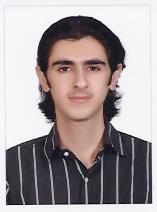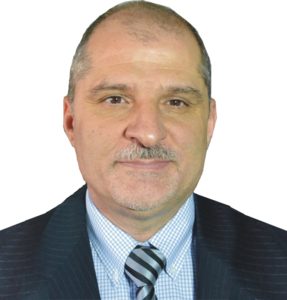Surendar Balakrishnan, Editor, Climate Control Middle East, presents a glimpse of the VRF landscape in Saudi Arabia

Tarek Zarzour
In 2008, Tarek Zarzour’s attempts at convincing building owners in Saudi Arabia to use variable refrigerant flow (VRF) systems were met with the question, “What is the return on investment (ROI)?” When he answered, “16”, they baulked and said, “But by that time, we would have to replace the units.” Energy efficiency as a topic never even managed to break into the conversation, Zarzour, VRF Department Head, High Gulf Contracting,
says.
Further describing the overall mood some years ago, Mohamed R Zackariah, Chief Consultant, Suhaimi Design – Protecooling, Saudi Arabia, says that any attempt to talk about energy conservation was met with silence. Simply put, he says, no one was interested.

Mohamed R Zackariah
The story in Saudi Arabia is relatively different today, though. For one, the ROI has climbed down some notches from its lofty perch, thanks to an increase in energy tariffs, which broadly speaking, is the result of the country rolling out a reform programme in 2016 through introducing a wide-ranging framework – the Saudi Vision 2030 and the accompanying National Transformation Programme (NTP). Chapter 2 (Ministry of Energy, Industry and Mineral Resources) of the NTP speaks of (Strategic Objective 8) the need to enhance the primary sources and security of the electricity supplies to enhance the livability of Saudi cities through lowering the number of power outages and of (Strategic Objective 12) the need to reduce fuel consumption emissions to safeguard the environment and natural resources).
Today, relatively speaking, the words enshrined in NTP are having an impact. Why relatively speaking? Zarzour says that while VRFs are finding appeal among building owners, they still are being regarded as a solution and not as an option. “All owners we have met were forced to put VRFs owing to technical issues, such as non-availability of space for outdoor units,” he says. “Until now, it is not an option but a solution.”

Wael Allan
Wael Allan, CEO, Saudi Lebanese Tarouk Contracting Company, says a transformation can happen only when end-users confront the situation of the cost of energy being excessive. Citing an analogy, he says that when fuel prices go up in Europe, people don’t use cars as much. Likewise, when end-users in Saudi Arabia see electricity prices going up further they will change their behaviour.
Convincing the owner over a period of time might be possible, but persuading contractors is part of the growing pain, says Zackariah. Allan believes that contractors still might not try to push VRFs, and that for the transformation to happen, end-users have to start becoming more demanding. To achieve that, Ahmad Numair Alamdar, independent consultant, says, the key strategy is to educate them on the benefits. He sees a dilemma on how to balance performance with he cost of the product. “Of course, VRF has a higher initial cost,” he says, “but after operation, it will be more fruitful.

Ahmad Numair Alamdar
To realise the benefits, Alamdar says, it is important that consultants and contractors specify and install VRF systems in a proper manner. And it is here that manufacturers and suppliers of the technology need to step up their game. “We need suppliers to put more effort into training on critical issues relating to the process of application, he says.
Even then, Allan says, consultants need to adopt a change in approach, and for that to happen, it is perhaps important to examine the current structure of liability in the country. “The contractor has liability of design in Saudi Arabia,” he says. “So, many consultants do poor design, knowing that contractors will take care of it. My advice is that building owners need to hire the best designers and engineers. As a contractor, I am happy to see a good designer. The construction outcome is as good as the design and engineering.” Additionally, the route to maximising the operational benefits of VRF technology involves an integrated approach to architectural design, Allan says. “We have situations here in Riyadh, where the architect has designed the building very differently, and then various others (stakeholders) have different expectations,” he says. “So, we have to improve on that aspect.”
The general mood in Saudi Arabia is that any initiative by VRF manufacturers and suppliers to more intensely promote the technology and to invest in rigorous training of contractors would be worth the effort. Dr Moataz T Bakheet Director, Madinah Office & Western Region Projects, Zuhair Fayez Partnership, says that clients who use VRF can be in line to achieve 30-40% power savings. “In addition, maintainability of VRF is much easier than other systems, which could involve water treatment.” He adds that the flexibility VRFs offer is a useful feature. “In Makkah, we have 10-15% occupancy, which increases during Haj, and VRF, as a decentralised system, is very good,” he says. “And in terms of space – a critical need – we need to put these machines in a very small space, so there are many benefits. And overall, from a lifecycle cost point of view, it is less expensive to have VRFs over traditional systems.” That’s quite a swing in sentiment from 2008.
Surendar Balakrishnan is the Editor of Climate Control Middle East magazine, and Co-Founder and Editorial Director of CPI Industry. He may be contacted at surendar@cpi-industry.com
Copyright © 2006-2025 - CPI Industry. All rights reserved.